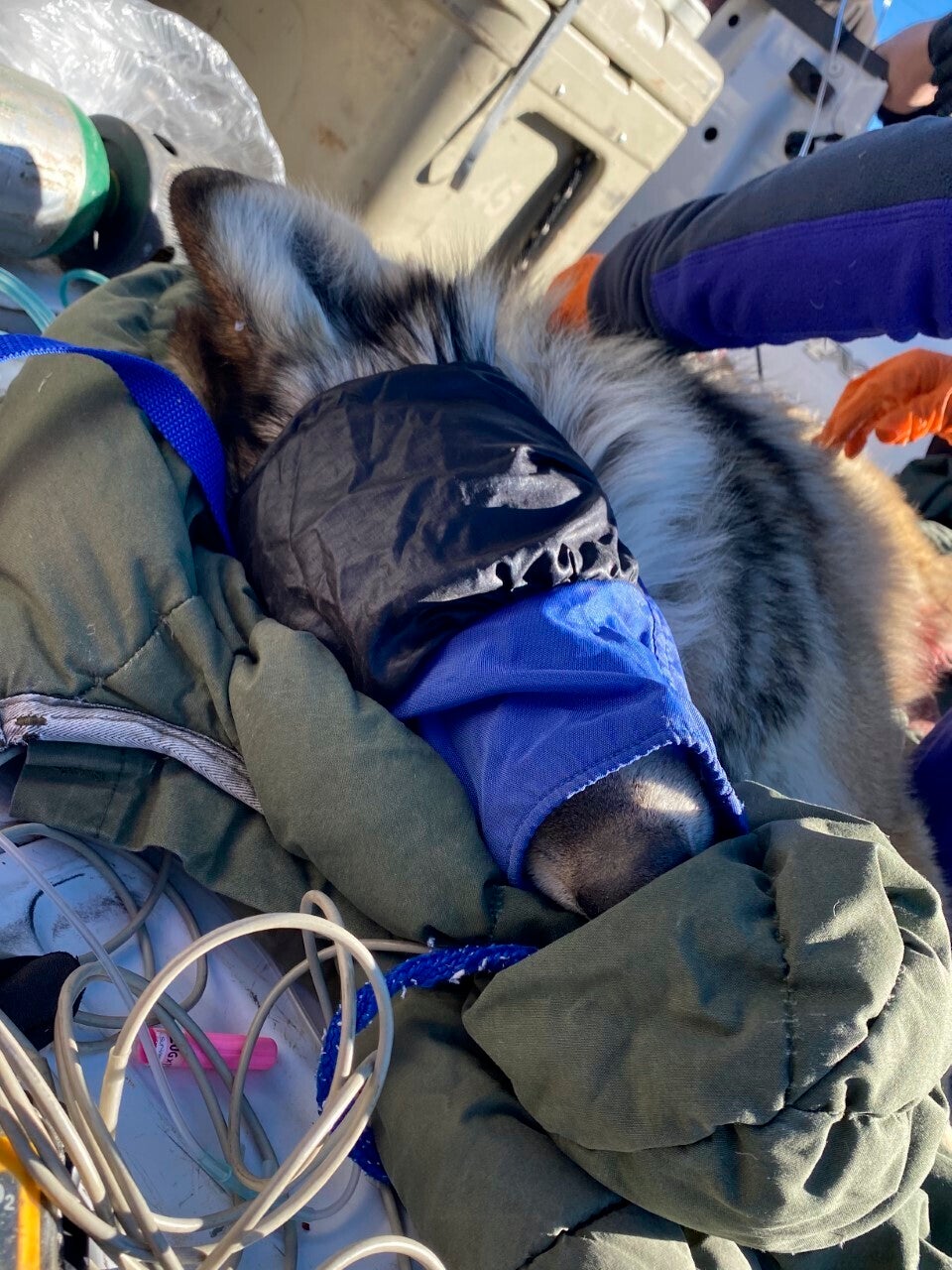Growth slows for endangered Mexican gray wolf population
There are now more Mexican gray wolves roaming the southwestern U.S. than at any time since the federal government started reintroducing the endangered species of predators

Your support helps us to tell the story
From reproductive rights to climate change to Big Tech, The Independent is on the ground when the story is developing. Whether it's investigating the financials of Elon Musk's pro-Trump PAC or producing our latest documentary, 'The A Word', which shines a light on the American women fighting for reproductive rights, we know how important it is to parse out the facts from the messaging.
At such a critical moment in US history, we need reporters on the ground. Your donation allows us to keep sending journalists to speak to both sides of the story.
The Independent is trusted by Americans across the entire political spectrum. And unlike many other quality news outlets, we choose not to lock Americans out of our reporting and analysis with paywalls. We believe quality journalism should be available to everyone, paid for by those who can afford it.
Your support makes all the difference.There are now more Mexican gray wolves roaming the southwestern U.S. than at any time since the federal government started to reintroduce the endangered species, wildlife managers said Wednesday.
The results of the latest annual survey of the wolves show there are at least 196 in the wild in New Mexico and Arizona — the sixth straight year that wolf population has increased.
But officials with the U.S. Fish and Wildlife Service said the population's growth in 2021 was tempered by higher than average pup mortality. Life was made more difficult for the wolves because of a persistent drought that has resulted in low precipitation and scant snowpack, the officials said.
Fewer than 40% of pups survived through the end of the year, though more breeding pairs were recorded in 2021.
“We are happy to see the wild population of Mexican wolves continue to grow year after year,” said Brady McGee, coordinator of the Mexican gray wolf recovery program. “The service and our partners remain focused on recovery through improving the genetic health of the wild population and reducing threats, while also working to minimize conflicts with livestock.”
Ranchers continue to have concerns about livestock killed by the wolves, saying efforts to scare the predators away from livestock — by horse riders, nonlethal shots fired from guns and flags put up on fences near cattle — have not been effective enough. Feeding caches for the wolves loaded with elk meat or road kill are also set up by officials to lure wolves away from livestock.
Unlike wolf reintroductions in Yellowstone National Park and elsewhere in the northern U.S., wildlife managers in the Southwest must deal with a climate that has encouraged a year-round livestock calving season, meaning wolves can prey on the livestock year-round instead of several months of the year.
The rarest subspecies of gray wolf in North America, the Mexican wolf was listed as endangered in the 1970s and a U.S.-Mexico captive breeding program was started with the seven remaining wolves in existence.
It’s estimated that thousands of Mexican wolves once roamed from central Mexico to New Mexico, southern Arizona and Texas. Predator eradication programs began in the late 1800s. Within several decades, the predators were all but eliminated from the wild.
There are currently about 380 Mexican wolves in more than 60 zoos and other facilities in the two countries. In Mexico, the wild population numbers around 40, officials have said.
The wolf recovery team placed 22 captive-born pups into seven wild dens in 2021 as part of a cross-fostering program aimed at boosting the population’s genetic diversity. Officials said two of the pups have since been captured and collared and that the effort to determine how many survived will continue this year.
The team also documented 25 wolf deaths in 2021. Officials rarely release many details about those cases that involve illegal shootings.
Environmentalists had hoped the U.S. population would have topped 200 in 2021. They have been pressuring the Fish and Wildlife Service to allow the predators to establish new packs in areas beyond the current recovery zone in southwestern New Mexico and southeastern Arizona.
The environmentalists have said that the southern Rockies and the Grand Canyon area would be suitable wolf habitat.
Federal officials are expected this summer to finalize a new rule that will govern management of Mexican wolves in the U.S.